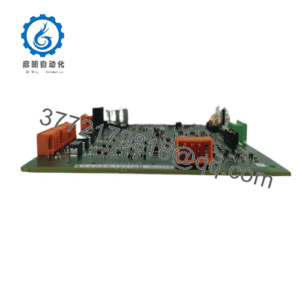Description
In the fast-paced world of rail transit systems, where traction control and propulsion must respond with split-second accuracy to maintain smooth acceleration, braking, and energy efficiency amid variable loads and track conditions, the frequent stumbling block is drive controllers that compromise on fault tolerance, diagnostic visibility, or seamless integration with onboard networks. Consider a metropolitan subway or light rail fleet navigating urban congestion: inverters convert DC from overhead lines or batteries into 3-phase AC for motors, but conventional units grapple with harmonic distortions from regenerative braking, voltage sags during peak demands, or communication lags in trainline protocols, leading to jerky rides, increased wear on traction components, or safety overrides that cascade into delays under standards like EN 50155 for SIL 2-rated applications. Legacy analog drives might suffice for basic motoring, but they falter in high-reliability environments, lacking the digital configurability, redundant architectures, or predictive fault detection needed for modular upgrades into modern train control systems where propulsion stability directly safeguards passenger throughput and operational resilience without the drag of downtime or retrofit overhauls.
The Bombardier DCC2223A 3EST125-977 addresses this head-on as a drive control unit from Bombardier’s DCC (Drive Control Card) series, meticulously designed for traction and control systems in rail vehicles. This module tackles the pursuit of system stability by managing inverter operations for asynchronous motors, processing feedback from resolvers or encoders with sub-1 ms response times, while supporting vector control for precise torque and speed regulation up to 1000 Hz switching frequencies. In typical industrial automation scenarios—such as metro train acceleration profiles or light rail regenerative braking sequences—the Bombardier DCC2223A 3EST125-977 emerges as vital, enabling compact rack-mount integration that interfaces via CANopen or MVB for real-time handoffs to train management systems, ensuring I/O signals from current sensors or throttle inputs remain robust amid 50 g shocks or -40 to +70 °C ambients. Its redundant TMR (Triple Modular Redundancy) architecture upholds fault tolerance for SIL 2 compliance, with built-in self-tests that preempt IGBT failures, making it a cornerstone for fleet-wide upgrades where propulsion reliability underpins seamless service without the vulnerabilities of single-threaded controls.
- DCC2223A 3EST125-977
- DCC2223A 3EST125-977
For teams retrofitting older DCC2100 series cards, the Bombardier DCC2223A 3EST125-977 offers a drop-in evolution with native firmware mapping that minimizes reconfiguration, complete with diagnostic buffering that preempts overcurrent events. In high-reliability rail automation, it fortifies against the rigors of trackside realities—like harmonic feedback from catenaries or vibration-induced connector wear—delivering the drive dynamics that align sensor insights with motor commands, where every pulse-width modulated cycle fortifies against the fog of failures, ensuring your transit timelines run with the precision that turns potential slips into scheduled successes.
The Bombardier DCC2223A 3EST125-977 anchors the propulsion control tier in the train’s onboard architecture, mounting in standard 3U Eurocard racks to condition 3-phase current feedback from Hall sensors or shunts, while its DSP core executes field-oriented control (FOC) for asynchronous induction motors, outputting PWM signals at 2-16 kHz to IGBT bridges for up to 500 A peak currents. It ingests throttle commands via MVB (Multifunction Vehicle Bus) or CAN, applying slip compensation for wheel-slide detection, and outputs status to TCMS (Train Control Management System) for centralized logging, supporting regenerative modes that recapture 90% energy during decelerations. Configured through Bombardier’s diagnostic tools or onboard EEPROM, it tunes parameters for adhesion curves and fault thresholds, drawing 24 VDC at 2 A max with redundant power inputs for failover under 10 ms.
In the broader train stack, the Bombardier DCC2223A 3EST125-977 positions mid-rack for optimal bus access, often mirrored in dual-channel setups where a secondary card votes outputs with <5 ms sync to uphold SIL 2 against single-point faults, leveraging Profinet for depot extensions that propagate trends to fleet management software. Diagnostics are embedded and intuitive: front LEDs signal mode (green for motoring, red for faults), while event queues—queryable via USB—log overcurrents or comms drops for predictive maintenance. It thrives on 24 VDC rails from train batteries, with hot-swap levers for in-service swaps without power interruptions, a lifeline in revenue operations. Protocols like CANopen enforce deterministic messaging, but in DCC cores, it harnesses the rack’s inherent fault tolerance for seamless handoffs to brake controllers.
This traction tenacity scales adroitly—cascade for multi-motor consists—while its 3U form eases enclosure density. For the engineer plotting propulsion paths, the Bombardier DCC2223A 3EST125-977 is the astute accelerator that anticipates adhesion anomalies, ensuring your motor momenta meld with masterful motion, bridging encoder edges to excitation excellence without the cacophony of compromises or the cost of current chaos.
| Specification | Details |
|---|---|
| Model Number | DCC2223A 3EST125-977 |
| Brand | Bombardier Transportation |
| Type | Drive Control Unit for Traction Systems |
| Input Voltage | 24 VDC (18-32 V) |
| Operating Temp Range | -40 °C to +70 °C |
| Mounting Style | 3U Eurocard Rack |
| Dimensions | 100 x 160 x 233 mm (H x W x D) |
| Weight | 0.8 kg |
| Interface/Bus | CANopen, MVB, RS-485 |
| Compliance | EN 50155, IEC 61508 SIL 2, CE |
| Supported Protocols | Profinet, Modbus RTU |
| Typical Power Draw | 2 A @ 24 VDC |
Integrating the Bombardier DCC2223A 3EST125-977 equips your traction systems with a propulsion prowess that transcends legacy limitations, where its FOC algorithms quash torque ripples that ripple into ride discomfort, ensuring long-term performance through 16-bit resolution that sustains 0.1% speed accuracy over 100,000 hours—yielding MTBF exceeding 250,000 hours to slenderize spares in undercarriage enclosures. This fortitude forgoes frequent recalibrations, with self-tests that spotlight IGBT drifts via CAN alerts, honing troubleshooting from exhaustive extractions to expedient evals that reclaim depots from downtime dreads.
Performance consistency shines in dynamic demands: <5 ms vector responses clasp 100% torque steps, synchronizing motor currents with throttle commands to forefend wheel slips in wet rails, vital for adhesion safeguards where hesitation hazards hydroplaning. Engineering burdens lighten markedly; its MVB-native bus meshes with incumbent TCMS sans remaps, hastening fleet infusions and reallocating acumen from wiring webs to waveform wizardry, while regenerative modes adapt to battery SOC without adders. Engineered for the rail engineer’s resilience, the Bombardier DCC2223A 3EST125-977 anticipates evolutions—like Ethernet for predictive fleet analytics—delivering a drive that doesn’t just regulate; it revitalizes, compressing OPEX through fewer faults, fluid firmware paths, and the latent leverage that lets trains traverse triumphantly, not tentatively.
In urban metro lines, the Bombardier DCC2223A 3EST125-977 orchestrates inverter stacks, conditioning resolver feedback amid platform surges in process control realms, where its redundancy upholds critical system uptime against catenary faults, fine-tuning accelerations for passenger comfort without jerk jolts.
Light rail transit vehicles harness the Bombardier DCC2223A 3EST125-977 for regenerative braking, amplifying encoder inputs in trackside EMI and 10 g curves, bolstering energy recapture in high-reliability fleets that necessitate SIL 2 surety to avert slips during downhill descents.
Freight locomotive upgrades deploy it for dynamic slipping control, interfacing current shunts in dust-laden cabs, with the Bombardier DCC2223A 3EST125-977‘s noise rejection ensuring nonstop hauling by muting false drifts in continuous loads that sync with throttle quadrants for traction torque without wheelspin wastes.
DCC2223A 3EST125-976 – Base variant for 63 VDC field upgrades in legacy DC commutator motors.
DCC2321 – Enhanced successor with Ethernet for predictive maintenance in smart fleets.
DCC2100 Series – Legacy predecessor for phased migrations with similar TMR but no CAN.
TCMS Interface – Complementary train management module for RS-485 handoffs from DCC2223A.
MVB Gateway – Add-on for multifunction bus extensions in multi-car consists.
Resolver Adapter – Sensor interface for encoder upgrades on DCC2223A feedback loops.
Bombardier Rack 3U – Enclosure for modular DCC2223A cascades in traction cabinets.
BESTLink Software – Diagnostic tool for configuration and fault logging on DCC2223A streams.
When preparing to rack-mount the Bombardier DCC2223A 3EST125-977, first verify your MVB segment termination at 120 Ω with a TDR tool to quash reflections—and cross-check firmware versions against Bombardier’s matrix for CAN handshake compatibility; snag the latest patch from their portal to embed Profinet profiles. Probe current loops for <100 mΩ resistance under mock load, as drifts mimic faults, and secure 3U standoffs at 2 Nm torque for 50 g resilience, while allocating 75 mm horizontal gaps for airflow in enclosures nearing 70 °C. Ground the rack to chassis PE per EN 50155, and precondition with a no-load spin test to affirm <5 ms vectoring sans saturation.
In operational orbit, upkeep centers on pragmatic, interval-based rituals that preserve propulsion without undue downtime. Monthly, cycle throttle commands through full-range tests—observe LED transitions for uniform gating—and pull event buffers via USB for torque ripple trends exceeding 1%, addressing with gain tweaks before they compound. Quarterly, enact a bench regen test with a dynamometer at 80% duty, timing responses under 20 ms for SIL 2 dossiers, and swab connectors in dusty depots with ESD cloths post-depowering to reset latches. For humid or trackside vaults, inspect seals semiannually for ingress, meggering isolation at 1 kV to hold 20 MΩ, and validate firmware on a shadow rack first for logic fidelity. This calibrated cadence, attuned to track tempos, equips your crew to sustain the Bombardier DCC2223A 3EST125-977‘s surge, heading off degradations before they derail your deadlines.

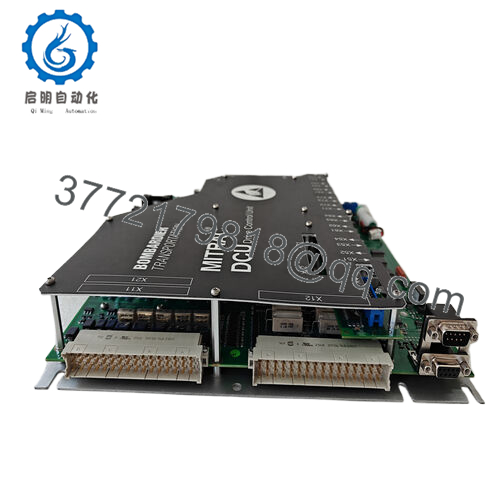
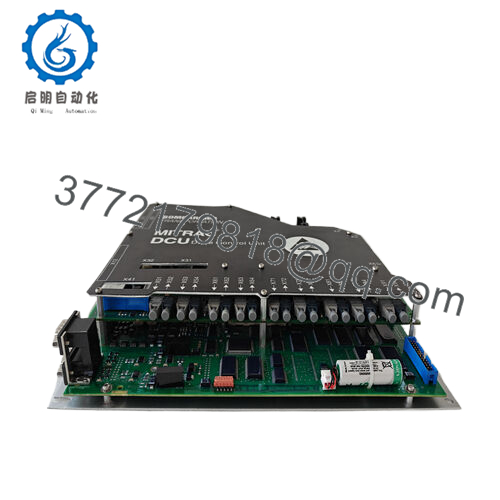
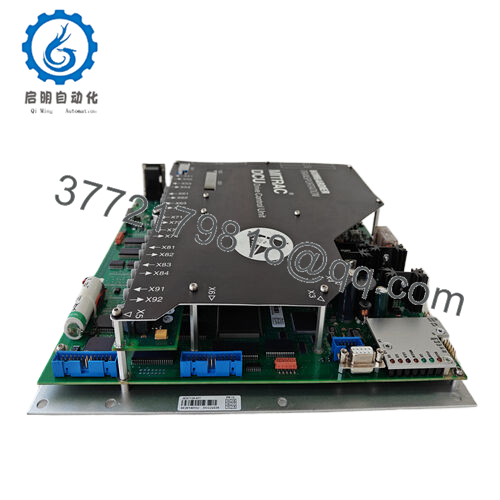
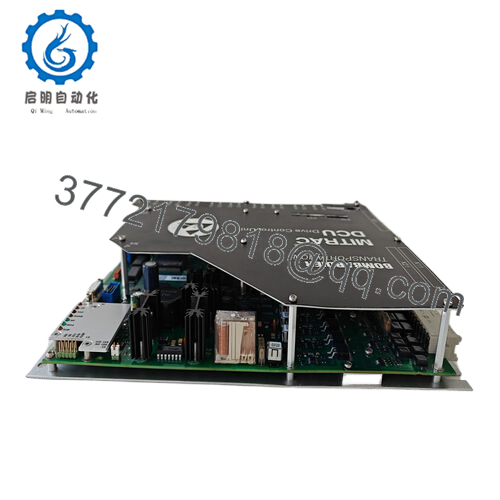
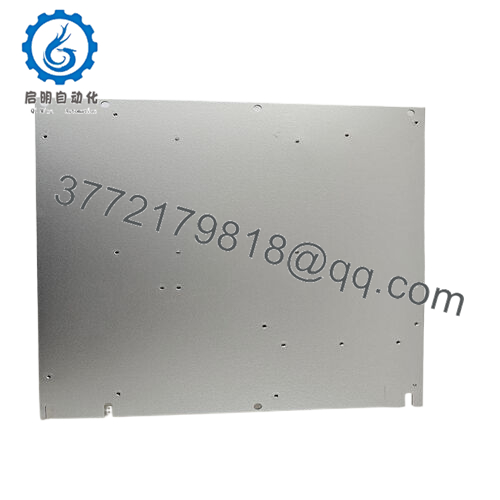
 WhatsApp: +86 16626708626
WhatsApp: +86 16626708626 Email:
Email:  Phone: +86 16626708626
Phone: +86 16626708626
